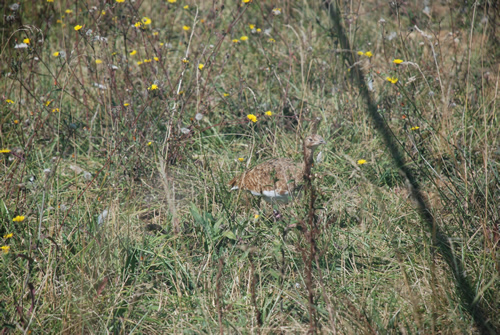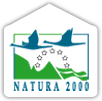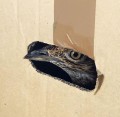 Actions
Actions 
A Actions
Action A1 Formalization of a structure for the project’s coordination and completion of
authorization and administrative actions.
This structure will start the procedure (agreements, resolutions and licenses) for the beginning
of the activities and the activation of partnerships, tenders and agreements. Memorandums
of understanding were also subscribed among the coordinating beneficiary and the partners
to regulate the relations, according to the standard administrative laws. The structure of
coordination involves a representative of the Province (coordinating beneficiary of the project)
and representatives of each beneficiary partner. The structure of coordination will be located in
the offices of the beneficiary partner, who will be responsible for the actions and the secretarial
office.
Action A2: Scientific faunal inventory
The preliminary studies about the species object of the project consist in the survey of faunal
and environmental data according to tested methods, with the intention of publishing the data
through reports and inventories (even cartographical ones), in order to obtain useful data for the
attainment of the objectives.
Ongoing studies are focusing on the present distribution of the species in the potentially eligible
areas of Tavoliere-Gargano-Murgia, included in “Parco Nazionale del Gargano”, “Parco Nazionale
dell’Alta Murgia”and “Parco Regionale delle Chiese rupestri nel materano”, collecting data on the
principal ecologic and conservational parameters and realizing a suitable cartography.
Suitable methods for the species will be used for the survey activities of faunal data foreseen by
action A2. They consist in the use of observation points in order to check the breeding sites and
observe the species’ behavior (in terms of choice of the habitat and use of the land). This activity
will follow a series of steps:
This activity
will follow a series of steps:
- Bibliographic survey;
- Cartographic survey;
- Identification of the 1x1 km grid for the survey on 100/ha squares of land in the suitable areas;
- Spring field activities for the survey of the presence of breeding sites (march-may) and of the
singing males/lek;
- Check of the nesting couples/fledging rate (June-September);
- Check of the specimens’ dispersion/winter group (October-January);
- Comparison of the results and editing of the final report that will include the location of the
species’ core areas, where the next restocking activities will be realized.
The survey of the data will be realized within the SPA. If the species will be seen from
birdwatchers/ornithologists outside the SPA, the data survey will be realized also in the bordering
areas to check the species’ presence and the possible nesting sites.
A census of birds in museums and private collections is also foreseen by action A2, in order to
create a database of the taxidermised specimens already present in the collections and to allow
the drawing and the forwarding of samples to the laboratory for genetic analysis.
Action A.3: Scientific flora-vegetation inventory in the habitats of Tetrax tetrax
This action foresees the inventory of flora-vegetation elements in the interested area as it follows.
FLORA: collection of plants to identify the species of the flora in the interested area. This
research will consider the vascular flora according to bibliographic analysis and data collected
on field. This kind of sampling is based on the model given by the European project of floristic
cartography (CFCE/MTB), already widely used from the European countries. The quadrant is the
cartographic reference unit, which the data of presence/absence of every species are referred
to. Every quadrant is divided in 4 zones. Each zone is then divided in several subzones, to have
further details. The manuals “Flora d’Italia” (Pignatti, 1982) and “Flora Europea” (Tutin et al.,
1993), along with the Annotated checklist of Italian vascular flora (Conti et al., 2005) are used
for the determination of the taxa. The informatics processing of floristic data is performed with
spreadsheets and GIS geographic software.
VEGETATION: The analysis of vegetation is performed with the phytosociological method.
HABITAT: The method of classification of Community interest habitat applied to Natura 2000
is based on botanic, floristic and vegetational principles, as advised by EU (methods as CORINE
biotopes or EUNIS). There aren’t yet specific references for Apulia Region. This is why the
European Directive will be followed and it for the determination of the habitat it will be used the
Interpretation Manual of European Union Habitat, produced by the European Committee DG
Environment, and the Italian Manual for Habitat Interpretation.
This action is fundamental to know the project area’s qualitative details (trophic availability,
suitability, habitat’s quality, kind of habitat, etc.) and quantitative details (habitat area, use of the
land, pressures, etc.), which are useful for the realization of the concrete actions of conservation
(actions C1 and C3).
Action A.4: Updating of Natura 2000 schedules
This action foresees the updating of the data of presence of the Little bustard in the Natura 2000
schedules in the SPA IT9110038 Paludi presso il golfo di Manfredonia, IT9110039 Promontorio del
Gargano, IT9120007 Alta Murgia and IT9220135 SPA Gravine di Matera.
The updating will be realized by the last year of the project, will be based on the data collected
with actions A2 and C3 and will be forwarded to the Apulia Region for the following steps.
Moreover, the updating will be only required for the Apulian SPA, where the setting-up of new
nuclei of the species can be reasonably expected.
Action A.5: Interregional action plan for the protection of Little bustard
This action foresees the elaboration of an interregional action Plan for the species, which will show
the measures required in order to avoid the species’ extinction in Apulia. Once edited, the plan
will be submitted to the three parks’ authorities and to the ISPRA (High Institute for Environmental
Research and Protection), which has a remarkable experience on it, having already worked out
national action plans for other threatened avifaunal species.
First, a workshop will be organized to realize the action plan. Experts operating for the safeguard
of the species will take part to the workshop and contribute to the setting-up of the plan.
The action Plan will be approved by Apulia Region, by the Province of Foggia and by Gargano
National Park Authority (considering that the drop zones are located in the SPA Paludi presso il
golfo di Manfredonia).
The action Plan refers to the official available documents and in particular to the European Union
Action Plans for 8 Priority Birds – Little Bustard (de Juana E. Martinez 1997). The threats and the
actions foreseen by this document will be compared to the present situation in Italy, with the
required updates and trying to fit them to the regional reality of the species’ distribution.
Action A.6: Editing of the executive project for the Little bustard breeding centre
This action foresees the drawing up of the executive project of the breeding centre (action C2) by
a qualified engineer, according to the legislation in force, thanks to the experience achieved by the
French breeding centre of the LIFE04/NAT/FR/000091 project.
Action A.7: Genetic and morphologic researches
The preliminary researches realized by Centro Studi Naturalistici Onlus (CSN Onlus) to check the
practicability of this LIFE project, make the hypothesis of having the possibility to check the sites of
origin of the specimens for the restocking, acceptable. Through action A2, a number of 50 samples
of organic material (feathers, derm) will be collected from taxidermised specimens belonging to
different populations. Once ready, the samples will be forwarded to the laboratory of genetic
analysis, which will start all the researches required.

















.jpg)
.jpg)
.jpg)
.jpg)
.jpg)










































.jpg)
























